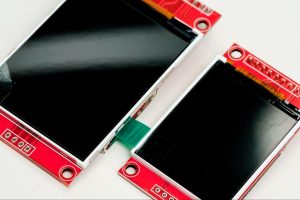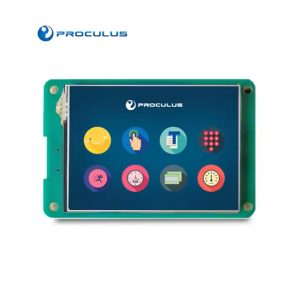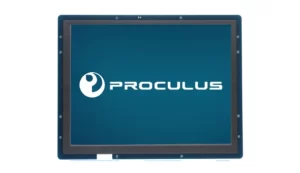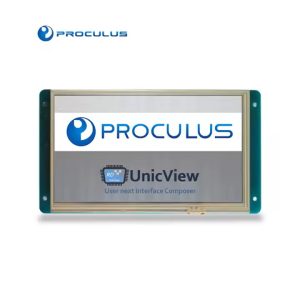System-on-Module: Complete guide to clear all your doubts
In embedded systems development, a System-on-Module is a strategic shortcut to faster innovation, reduced risk, and scalable design.
Whether building smart industrial devices, next-generation medical equipment, or intelligent kiosks, understanding how SoMs work (and how they compare to SBCs and CoMs) can unlock a more efficient path from prototype to product.
In this guide, you’ll discover what a System-on-Module is, and why it’s rapidly becoming the preferred architecture for serious developers worldwide.
 System-on-Modules are utilized in a wide range of applications, enabling developers to create innovative and efficient solutions. Here are a few notable examples:
System-on-Modules are utilized in a wide range of applications, enabling developers to create innovative and efficient solutions. Here are a few notable examples:
What is a System-on-Module (SoM)?
A System-on-Module (SoM) is a compact board that integrates all the core components of a computing system, including a processor, memory, storage, and essential interfaces. It is designed to plug into a carrier board or baseboard, that provides the application-specific connections and peripherals.What is the difference between SBC and SoM?
While both Single-Board Computers (SBCs) and Systems-on-Module (SoMs) serve as embedded computing platforms, they differ in architecture, purpose, and flexibility. An SBC is a complete, standalone board with all the required components integrated, including CPU, memory, I/O ports, and sometimes display and network interfaces. It’s intended to function independently. While often used for prototypes and education, many SBCs are also deployed in commercial and industrial applications. The choice between SBC and SoM depends on customization needs, production volume, and specific application requirements rather than just complexity level. A SoM, on the other hand, is not standalone. It must be paired with a carrier board that provides the necessary application-specific connectors and circuitry. This modular approach makes SoMs better suited for industrial or commercial projects that require customization, scalability, or high production volumes. Unlike SBCs, SoMs allow design teams to optimize the hardware layout for performance, size, cost, or environmental considerations.What is the difference between CoM and SoM?
System-on-Module (SoM) and Computer-on-Module (CoM) are closely related terms, and in many contexts, they are used interchangeably. However, subtle differences in usage can exist depending on industry or vendor preference. A CoM traditionally emphasizes the computing aspect, focused on delivering processing power and general-purpose computing capabilities. It usually includes the CPU, RAM, and I/O interfaces but may leave out application-specific elements. A SoM typically conveys a more holistic system-oriented perspective. In addition to the computing core, it often integrates more functional elements such as dedicated graphics support, audio codecs, storage, and even pre-loaded firmware and real-time operating systems. In this sense, SoMs may be positioned as more application-ready than CoMs. In practical terms, the distinction matters less than the specs and capabilities of the specific module. However, SoMs tend to be marketed more toward complete, embedded-system integration, whereas CoMs may focus more on raw computing power.Why Use a System-on-Module?
Adopting a System-on-Module architecture can significantly improve the development process of embedded systems. Here’s a breakdown of the most compelling reasons to integrate a SoM into your design:1. Rapid Application Development
A SoM provides a ready-to-use core computing platform, allowing developers to skip the complex and time-consuming task of designing the processor and essential interfaces from scratch. This modular approach enables teams to start application-level development in parallel with hardware integration, dramatically accelerating the prototyping phase. With built-in support for operating systems, peripheral drivers, and debugging tools, SoMs eliminate many of the typical setup bottlenecks. This means your engineering team can significantly reduce prototype development time, typically from months to weeks, depending on application complexity.2. Faster Time-to-Market
In highly competitive markets, speed is everything. SoMs help companies launch products faster by reducing the design, testing, and validation efforts required for custom hardware development. Because SoMs are pre-validated modules, they eliminate much of the risk associated with hardware bugs and compatibility issues. Manufacturers can also begin software development while hardware teams are still finalizing the baseboard, making parallel development feasible and efficient. The result is a shorter, more predictable product development cycle and a quicker path to revenue.3. Cost Reduction
While SoMs have higher per-unit costs than custom designs, they can provide cost savings in low-to-medium volume production (typically under 10,000 units) when development costs and time-to-market are factored in. For high-volume production, custom designs may be more cost-effective. These savings come from several areas:- Reduced engineering hours and R&D costs;
- Fewer board revisions due to hardware bugs;
- Lower certification and compliance expenses;
- Streamlined inventory management.
4. Scalability and Flexibility
One of the key strengths of SoMs is their adaptability across different product lines or performance tiers. Need to upgrade your CPU for a premium product? You can often swap one SoM for another with a similar form factor and pinout, with little or no redesign of the carrier board. This modularity enables a scalable product strategy (start with an entry-level SoM for a basic model, and upgrade to a more powerful version for high-end variants) all while maintaining the same mechanical and electrical architecture. That’s flexibility without compromise.5. Simplified Hardware and Software Development
SoMs can remove much of the complexity involved in designing embedded systems. By handling low-level hardware design, power management, memory integration, and I/O interfacing, SoMs allow developers to focus on building differentiated features and applications. From a software perspective, many SoMs come with extensive development toolchains, board support packages (BSPs), and ready-to-use operating system images. This greatly reduces the learning curve and ensures better compatibility between hardware and software layers.6. Easy Integration of Advanced Technologies
Modern embedded applications increasingly require capabilities like AI inference, touch-screen GUIs, wireless communication, and real-time data processing. Implementing these from the ground up can be extremely challenging. Many modern SoMs offer advanced capabilities such as hardware-accelerated graphics, AI/ML acceleration, secure boot, and various connectivity options, though specific features vary significantly between different SoM families and manufacturers. It’s essential to verify that your chosen SoM includes the specific capabilities your application requires. With the right SoM, cutting-edge features become accessible even to small development teams.Applications of System-on-Modules
 System-on-Modules are utilized in a wide range of applications, enabling developers to create innovative and efficient solutions. Here are a few notable examples:
System-on-Modules are utilized in a wide range of applications, enabling developers to create innovative and efficient solutions. Here are a few notable examples:
1. Security Cameras
Cutting-edge security camera systems rely on video analytics to categorize and understand what they see in real-time. SoMs enable edge computing, allowing cameras to process data locally and provide accurate insights without latency.2. Machine Vision
Embedded systems powered by SoMs enable real-time data analysis and configurable sensor capabilities, making machine vision applications more accessible and cost-effective. By leveraging SoMs, developers can scale their machine vision solutions and improve productivity across different sectors.3. Smart Cities
Smart cities rely on ubiquitous sensors to gather data and provide insights for efficient decision-making. SOMs power these sensors, enabling city officials to monitor and manage various aspects of urban life, including utilities, traffic, and public services.4. Motor Control
Electric motors are used in a wide range of applications, from public transportation to factory automation. SoMs help accelerate the development of motor control systems by offering adaptability and flexibility to connect with new peripherals as standards evolve.Selecting the Right System-on-Module
Choosing the right System-on-Module is crucial for the success of your embedded project. To ensure that you make an informed decision, consider the following factors:1. Performance and Processing Power
Evaluate the processing power requirements of your embedded application. Determine whether a small-scale SoM is sufficient for your IoT edge devices or if you need a high-performance SoM for more demanding applications. Consider the computational capabilities, memory capacity, and communication interfaces offered by different SoM options to match your specific needs.2. Power Consumption
Evaluate the power requirements and heat dissipation capabilities of different SoMs to ensure they align with your project’s power constraints. Consider whether the SoM is designed for connected power sources or if it requires power management for mobile or unreliable power sources.3. Hardware Constraints
Consider the peripherals and interfaces required for your specific application. Identify the necessary hardware components such as wireless communication modules, GPS, or card readers, and ensure that the chosen SoM supports the required interfaces.4. Software Compatibility
Consider the availability of software toolchains, operating systems, and development environments that are compatible with the chosen SoM. Depending on your project’s specific needs, you may prefer ARM-based devices that can run Linux or Android, or Intel-based devices that offer compatibility with a wide range of operating systems, including Windows and Linux.5. Operating System Focus
Depending on the application and target market, you may need to choose an operating system such as Android, Windows, or Linux. Evaluate the availability of software development kits (SDKs), peripheral drivers, and module support for the chosen operating system to ensure a smooth development process.6. Durability
Assess the expected lifespan and support provided by the SOM manufacturer. Consider the longevity of the chosen SoM, as it will impact the longevity and maintenance of your end product. Ensure that the SoM is included in your obsolescence management criteria to mitigate the risks associated with discontinued or unsupported modules.Proculus System-on-Modules: A Reliable Solution
When it comes to developing embedded systems with graphical user interfaces, choosing the right hardware partner can make all the difference. Proculus Technologies stands out by offering more than just display modules. We provide complete, intelligent solutions designed to simplify development, reduce risk, and deliver professional results. Our UART TFT LCD modules combine a powerful System-on-Module with a vivid, responsive touch display. These modules come pre-integrated with a GUI engine and support the UnicView Studio development environment, an intuitive, drag-and-drop software that enables engineers to build custom interfaces quickly, even with minimal coding experience. What makes Proculus SoMs especially reliable is our focus on:- Industrial-grade stability, ideal for harsh or demanding environments;
- Streamlined integration, thanks to UART communication and detailed documentation;
- Rapid prototyping and deployment, reducing development cycles significantly;
- Long-term support, giving developers confidence in lifecycle management and scalability.
Conclusion
System-on-Modules are a game-changer in embedded development. They take the complexity out of hardware design, accelerate time-to-market, and open the door to high-performance features without the typical engineering overhead. By partnering with a trusted provider like Proculus Technologies, you’re choosing a development experience that’s faster, easier, and backed by expert support. Whether you’re scaling an existing product line or launching an entirely new device, our SoM-based UART TFT LCD modules offer the foundation you need to build with confidence. In today’s competitive landscape, speed, flexibility, and reliability are essential. And that’s exactly what Proculus delivers. Thanks for reading!
Category:
Author:
Client:
Date:
PHP Code Snippets Powered By : XYZScripts.com
 English
English


